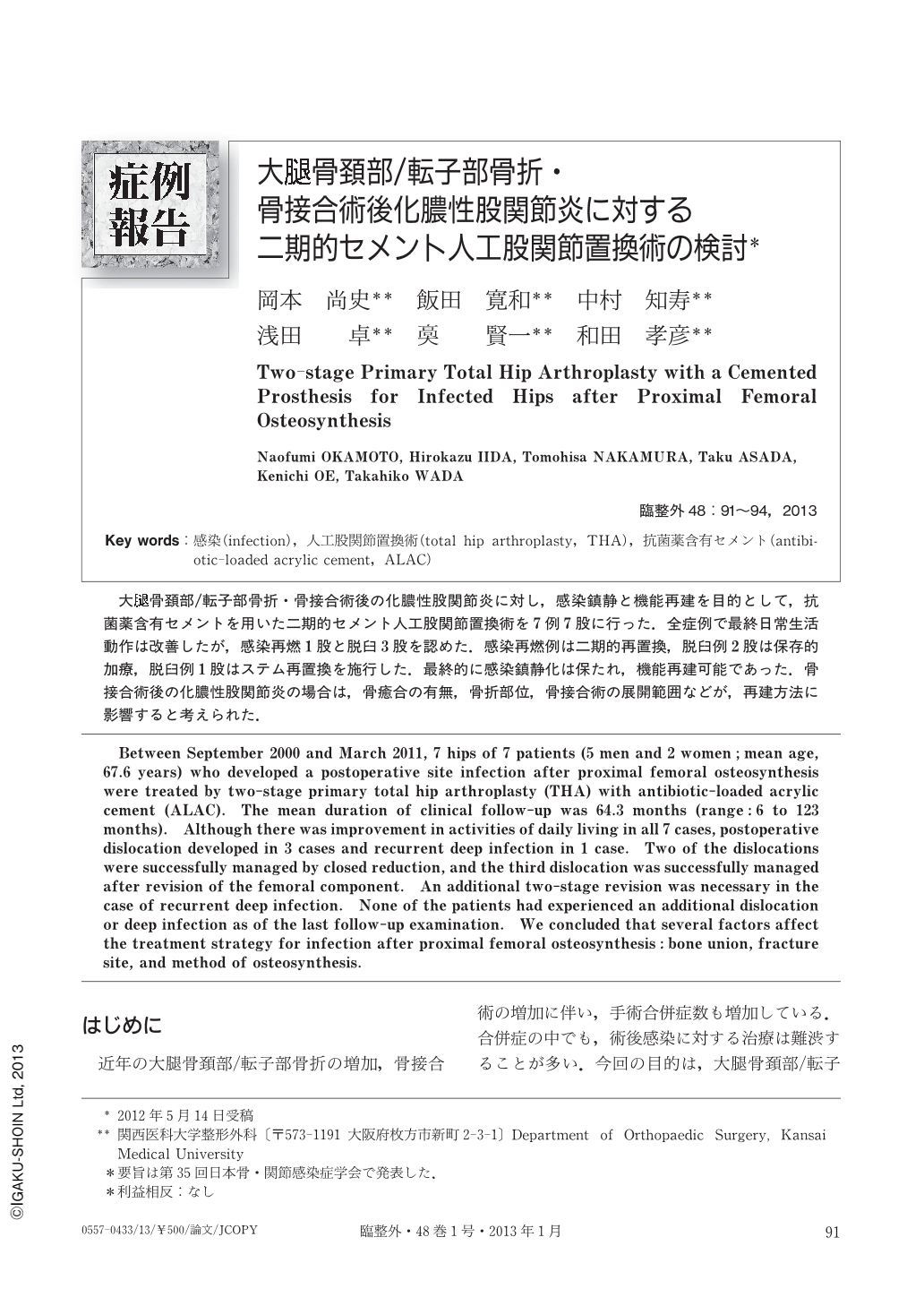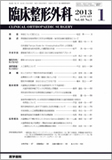Japanese
English
- 有料閲覧
- Abstract 文献概要
- 1ページ目 Look Inside
- 参考文献 Reference
大腿骨頚部/転子部骨折・骨接合術後の化膿性股関節炎に対し,感染鎮静と機能再建を目的として,抗菌薬含有セメントを用いた二期的セメント人工股関節置換術を7例7股に行った.全症例で最終日常生活動作は改善したが,感染再燃1股と脱臼3股を認めた.感染再燃例は二期的再置換,脱臼例2股は保存的加療,脱臼例1股はステム再置換を施行した.最終的に感染鎮静化は保たれ,機能再建可能であった.骨接合術後の化膿性股関節炎の場合は,骨癒合の有無,骨折部位,骨接合術の展開範囲などが,再建方法に影響すると考えられた.
Between September 2000 and March 2011, 7 hips of 7 patients (5 men and 2 women;mean age, 67.6 years) who developed a postoperative site infection after proximal femoral osteosynthesis were treated by two-stage primary total hip arthroplasty (THA) with antibiotic-loaded acrylic cement (ALAC). The mean duration of clinical follow-up was 64.3 months (range:6 to 123 months). Although there was improvement in activities of daily living in all 7 cases, postoperative dislocation developed in 3 cases and recurrent deep infection in 1 case. Two of the dislocations were successfully managed by closed reduction, and the third dislocation was successfully managed after revision of the femoral component. An additional two-stage revision was necessary in the case of recurrent deep infection. None of the patients had experienced an additional dislocation or deep infection as of the last follow-up examination. We concluded that several factors affect the treatment strategy for infection after proximal femoral osteosynthesis:bone union, fracture site, and method of osteosynthesis.

Copyright © 2013, Igaku-Shoin Ltd. All rights reserved.


